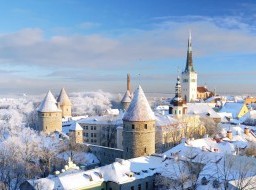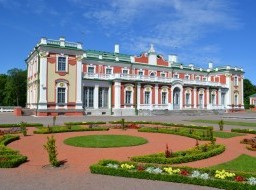St. Olaf's Church
St. Olaf’s Church or St. Olav's Church in Tallinn, Estonia, is believed to have been built in the 12th century and to have been the centre for old Tallinn's Scandinavian community before Denmark conquered Tallinn in 1219. Its dedication relates to King Olaf II of Norway (also known as Saint Olaf, 995–1030). The first known written records referring to the church date back to 1267, and it was extensively rebuilt during the 14th century. History In origin, St Olaf's was part of the united western tradition of Christianity, whose polity continues in the Roman Catholic Church today. However, during the Reformation the church became been part of the Lutheran tradition. Eventually proving surplus to the requirements of the Evangelical Lutheran Church in Tallinn, St Olaf's became a Baptist church in 1950. The Baptist congregation continues to meet at St Olaf's today. From 1944 until 1991, the Soviet KGB used Oleviste's spire as a radio tower and surveillance point. Height In 1590, the total height of the church tower was 115.35–125 m. The tower has been hit by lightning around 10 times, and the whole church has burned down three times throughout its known existence. According to sources it was the tallest building in the world from 1549 to 1625, but this claim is controversial: one account of the final rebuilding states the church was formerly "ten fathoms" higher, but paintings depict a spire similar in proportions to the current one; moreover, several different fathoms were in use in Estonia at the time and it is uncertain which was meant. After several rebuildings, its spire is now 123.8 meters tall. |








